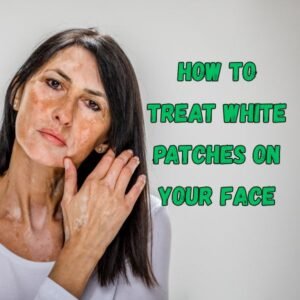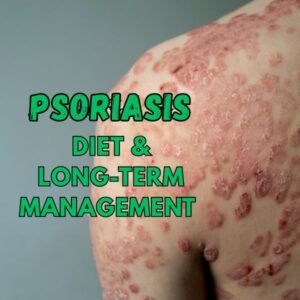Pigmentation disorders are among the most common reasons patients visit dermatology clinics. While many skincare brands and online platforms promote “miracle cures” or “one-cream fixes,” the dermatological reality is far more complex. These conditions are often chronic, relapsing, and influenced by complex internal and external factors.
Patients understandably want fast, permanent solutions—but as a dermatologist, it is my duty to provide honest, evidence-based guidance. Pigmentation is not just a superficial issue; it can deeply impact self-esteem and emotional well-being. That’s why a transparent understanding of what is and isn’t possible is the first step toward effective treatment.
Understanding Patient Expectations vs. Realities
Many patients arrive at dermatology clinics with high hopes, often shaped by aggressive marketing campaigns or social media influencers promoting a “holy grail” product. Unfortunately, these narratives frequently underplay the complexity of pigmentation disorders.
Pigmentation issues, especially melasma and LPP, have multifactorial etiologies. These include hormonal fluctuations, genetics, immune response, UV exposure, and even air pollution.1 Because of this, no single treatment—topical, oral, or procedural—can provide a one-size-fits-all or permanent cure.
Causes of Pigmentation: An Overview
Pigmentation refers to the coloring of the skin, primarily governed by melanin—a pigment produced by melanocytes in the basal layer of the epidermis. When melanin production is disrupted or increased due to inflammation, injury, hormones, or autoimmune activity, the result is uneven skin tone or dark patches.
Some of the most commonly encountered pigmentation disorders include:
- Melasma: A chronic, symmetrical hyperpigmentation often triggered by sun exposure, hormonal changes, and genetics.
- Lichen Planus Pigmentosus (LPP): A rare, immune-mediated condition more prevalent in individuals with darker skin types, characterized by slate-gray to brown discoloration.
- Post-Inflammatory Hyperpigmentation (PIH): A temporary increase in pigment following skin inflammation or injury (e.g., acne, burns, eczema).
- Freckles and Lentigines: Benign pigment spots, often genetic or sun-induced, usually harmless but sometimes cosmetically concerning.
The underlying causes, depth of pigment deposition (epidermal vs. dermal), and skin type all determine how responsive the pigmentation will be to treatment.
The Myth of a “One Cream Cure”
It’s tempting to believe that one powerful cream can erase years of pigmentation issues. Advertisements and influencers frequently promote this idea, often using heavily edited before-and-after photos. But from a medical standpoint, this is not only misleading—it can be harmful.

Pigmentation disorders like melasma and LPP are chronic and relapsing by nature. They are influenced by internal factors (hormones, immune activity, genetics) and external triggers (sun exposure, heat, medications). No single topical agent or product can address all these variables permanently. Even the most potent medical treatments offer improvement—not a cure.
Additionally, most over-the-counter “miracle creams” lack rigorous clinical trials. Many contain subtherapeutic doses of active ingredients or, worse, undisclosed corticosteroids or mercury, especially in unregulated markets.2 These products may offer short-term lightening but cause long-term skin damage, thinning, or rebound pigmentation.
The Role of Prescription Topicals
Prescription creams are often the first line of treatment in managing pigmentation disorders. Dermatologists rely on evidence-backed agents that target melanin production, exfoliate pigmented skin layers, and reduce inflammation. Here are three of the most commonly used:
- Hydroquinone: Often considered the gold standard in hyperpigmentation treatment. It works by inhibiting tyrosinase, the enzyme responsible for melanin production. However, it must be used under professional supervision due to potential side effects like irritation, exogenous ochronosis (a bluish-gray discoloration from overuse), and rebound pigmentation.
- Tretinoin (Retinoic Acid): A vitamin A derivative that accelerates skin cell turnover and helps fade pigmentation by exfoliating melanin-rich keratinocytes. It also enhances the penetration of other topical agents like hydroquinone.
- Topical Corticosteroids: Often included in combination creams (like the famous Kligman’s formula), they reduce inflammation and irritation. However, prolonged use can lead to skin thinning and steroid dependence.
Some patients may also benefit from non-hydroquinone options like azelaic acid, kojic acid, niacinamide, or cysteamine, especially for long-term maintenance.
It’s important to note that combination therapy (like hydroquinone + tretinoin + steroid) under dermatologist supervision is more effective than monotherapy—but must be cycled to avoid side effects.
In-Clinic Treatments: What Works and What Doesn’t
When topical treatments alone are insufficient—or when faster results are desired—dermatologists may recommend in-office procedures. However, not all treatments are equal in efficacy or safety for every skin type or pigment disorder.
1. Chemical Peels
Superficial to medium-depth peels using glycolic acid, salicylic acid, or trichloroacetic acid (TCA) can improve pigmentation by accelerating cell turnover and removing melanin-laden layers of skin. These are particularly effective for post-inflammatory hyperpigmentation and superficial melasma. Deep peels, however, carry a risk of scarring and are rarely recommended for darker skin tones.
2. Laser Treatments
Laser therapies like Q-switched Nd:YAG and fractional lasers can break down melanin in the dermis and epidermis. However, lasers for melasma and LPP are controversial. While some patients show improvement, others may experience worsening due to laser-induced inflammation, especially without strict sun protection post-procedure. Use of lasers must always be cautious in Fitzpatrick skin types IV–VI.
3. Microneedling
Microneedling creates micro-injuries that stimulate collagen and help topical agents penetrate deeper. When combined with tranexamic acid or vitamin C, it can support melasma treatment—but is not a standalone cure.
Ultimately, selecting the right treatment requires careful evaluation of the pigmentation’s cause, depth, and chronicity. A personalized, medically supervised plan is the most effective and safest route.
Combining Modalities: The Key to Long-Term Management
One of the biggest misconceptions about pigmentation treatment is the belief that a single approach—like a cream or a procedure—can provide lasting results. In reality, combination therapy is the most effective and scientifically supported strategy, particularly for complex conditions like melasma and LPP.
In dermatology, we often combine:
- Topical agents (e.g., hydroquinone, retinoids)
- Oral therapies (like tranexamic acid for melasma)
- In-clinic treatments (peels, microneedling, or lasers)
- Sun protection strategies
- Lifestyle modifications (hormonal evaluation, heat avoidance, etc.)
This integrative approach addresses pigmentation at multiple levels: melanin production, skin turnover, inflammation, and external triggers. For example, treating melasma may involve a triple combination cream, monthly glycolic acid peels, daily use sunscreen, and an oral course of tranexamic acid—all customized to the patient’s skin type and response.
The key is individualized treatment planning, something only a licensed dermatologist can truly provide. When patients commit to this multi-pronged regimen, the outcomes are often dramatically better than any single method alone.
Maintenance Is Non-Negotiable
Once pigmentation visibly improves, patients often make the mistake of stopping treatment or easing up on sun protection. This can lead to a rebound effect, where the pigmentation returns—sometimes worse than before. That’s why maintenance therapy is a non-negotiable part of the pigmentation journey.
1. Sun Protection
UV radiation is the number one external trigger for most pigmentation disorders. Even indirect exposure through windows or electronic screens can worsen melasma and LPP. Daily broad-spectrum sunscreen (SPF 50+) with reapplication every 2–3 hours is essential—rain or shine. Sunscreens containing zinc oxide or iron oxide also help block visible light, which is known to aggravate melasma.
2. Lifestyle and Hormonal Considerations
For melasma, managing hormonal factors (e.g., reviewing contraceptive choices or thyroid health) is crucial. Heat, stress, and even certain cosmetics can exacerbate pigment issues. Lifestyle modifications, such as wearing wide-brimmed hats, using anti-pollution skincare, and avoiding tanning beds or saunas, can make a significant difference.
3. Long-Term Skincare
Post-clearance, patients may transition to gentler actives like azelaic acid, niacinamide, or cysteamine. These help maintain even skin tone without the risks associated with prolonged hydroquinone or steroid use.
Maintenance is not just about preventing relapse—it’s about preserving the investment you’ve made in your skin and continuing to improve texture, tone, and overall health.
Can Pigmentation Ever Be “Cured” Permanently?
This is the question I’m asked most frequently as a dermatologist—and the honest answer is: No, pigmentation disorders like melasma and LPP cannot be permanently cured in the way many patients hope. They can be managed, controlled, and even significantly improved, but a once-and-for-all “cure” is not currently possible with the science and tools we have.
1. The Difference Between Clearance and Cure
Clearance means the visible pigmentation is gone or drastically reduced. Cure implies it will never return. While many patients reach near-total clearance, the underlying condition—whether hormonal, autoimmune, or melanocyte-based—may still be active or easily re-triggered.
2. Relapse Risks and How to Prevent Them
Relapses are common, especially if sun protection lapses or maintenance therapy is stopped. Changes in hormonal status, climate, or even skin irritation from a new product can reignite pigmentation. That’s why consistent follow-up with your dermatologist is essential.
That said, many patients enjoy years of clear skin with proper maintenance and minor touch-ups. The goal should be long-term control, not an elusive “cure.”
Products Making Bold Claims: How to Spot Red Flags
The skincare market is flooded with over-the-counter products that promise to “erase dark spots overnight” or “cure pigmentation in 7 days.” These marketing claims are not only scientifically unfounded, but they also prey on vulnerable consumers desperate for results.
Here are a few red flags to watch out for:
1. Unregulated Ingredients
Many so-called “miracle creams” contain illegal or unsafe substances like mercury, high-potency steroids, or unapproved hydroquinone levels—especially in products sold online or through informal markets. Prolonged use of such products can lead to skin thinning, paradoxical darkening, and systemic toxicity. The U.S. FDA and WHO have issued multiple warnings about these types of products.3,4
2. Lack of Transparency
Legitimate products list their active ingredients, concentrations, and directions clearly. If the product doesn’t disclose this information or relies on vague terms like “whitening complex” or “natural brighteners,” it’s best to avoid it.
3. Instant Results Promises
Pigmentation takes time to fade—even with professional treatments. Any product that promises instant results is likely using irritants or bleaching agents that may damage your skin barrier.
Always consult a board-certified dermatologist before trying a new pigmentation treatment. It’s better to invest in a proven regimen than gamble with your skin health.
The Role of Skin Type in Treatment Outcomes
Skin type plays a critical role in both the development and treatment of pigmentation. Dermatologists classify skin into six categories using the Fitzpatrick scale, which measures how skin responds to UV exposure:
- Type I–III (lighter skin tones) are more prone to sunburn and freckling but often respond better to laser treatments.
- Type IV–VI (darker skin tones) are more susceptible to post-inflammatory hyperpigmentation (PIH) and melasma, and require gentler, more tailored treatment plans to avoid further pigmentation or scarring.
Here’s how skin type affects treatment:
- Darker skin has more active melanocytes, which can easily overreact to inflammation caused by lasers, chemical peels, or even minor skin irritation.
- Certain peels and lasers (e.g., deep phenol peels, IPL) are contraindicated in Fitzpatrick IV–VI due to high risk of pigmentation rebound or scarring.
- Topicals like hydroquinone must be used with caution and under supervision in all skin types, but especially darker tones.
A personalized approach is key. Treatments that work well for one patient may worsen pigmentation in another. This is why a board-certified dermatologist should always assess skin type before recommending a protocol.
Patient Education: Setting Realistic Goals
A major part of treating pigmentation effectively is managing expectations. As dermatologists, we strive to guide patients with transparency, empathy, and evidence—not just prescriptions.
Here’s what we emphasize during patient consultations:
1. Pigmentation Takes Time to Improve
Most patients see visible improvement only after 8 to 12 weeks of consistent use of topicals, and even longer for in-clinic procedures. Patience is essential.
2. Pigmentation Can Return
Even after successful treatment, pigmentation can relapse due to triggers like sun, heat, stress, or hormonal changes. That’s why maintenance is a lifelong commitment.
3. Education Empowers Compliance
When patients understand how pigmentation forms and why each component of their regimen matters (like sunscreen reapplication), they are more likely to stick to the plan and achieve better results.
Ultimately, we aim to build trust and collaboration with patients so they feel empowered—not overwhelmed—throughout their skin healing journey.





